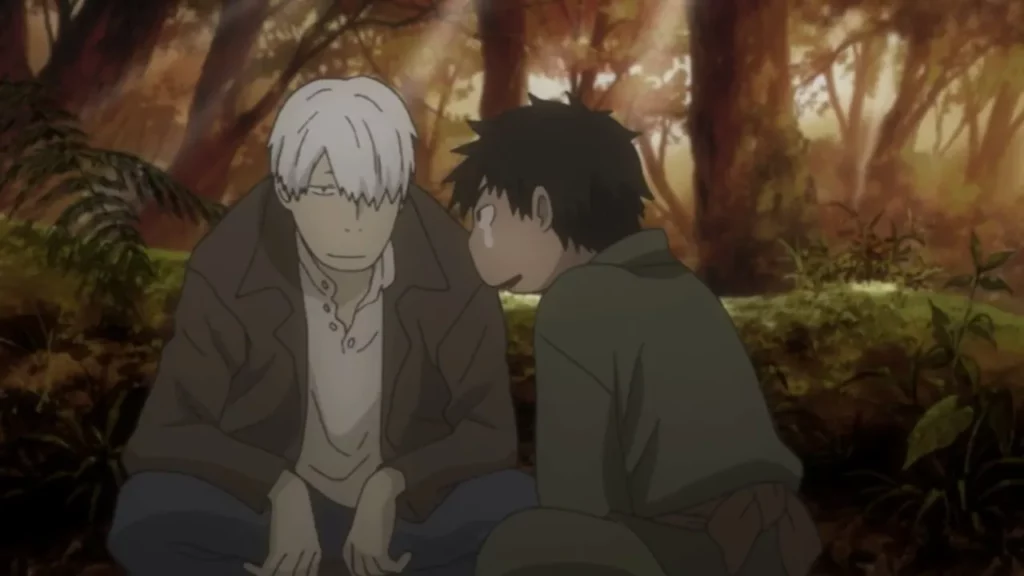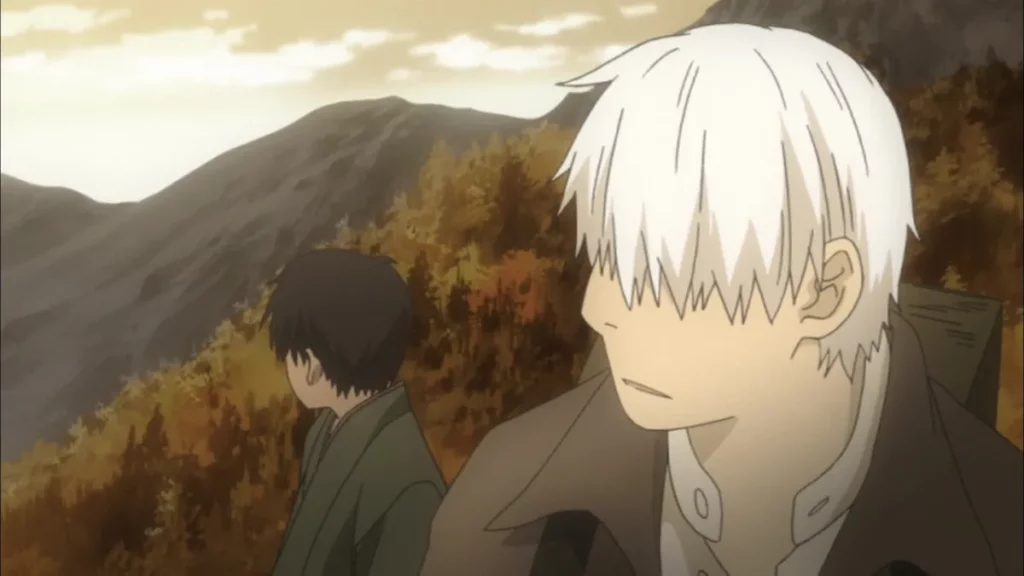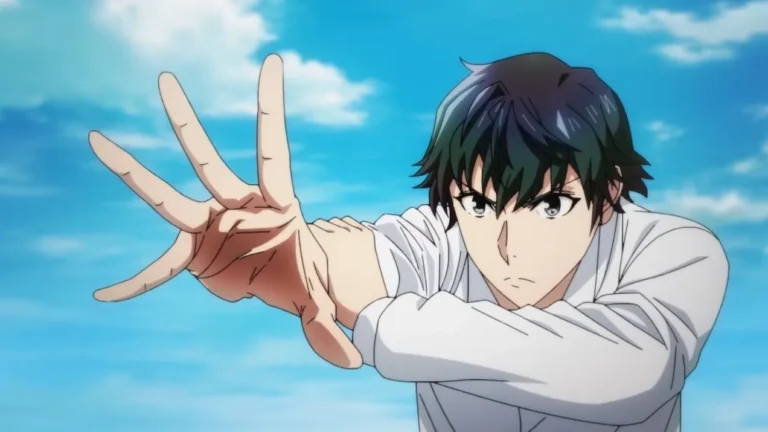Unraveling the Mushishi Watch Order Guide

Introduction:
Mushishi Watch Order: In the realm of anime that blends the ethereal with the mundane, Mushishi stands as a masterpiece, inviting viewers into a world of mysterious creatures known as Mushi. However, navigating the watch order for Mushishi can be as enigmatic as the series itself. In this comprehensive blog post, we embark on a journey through the Mushishi watch order, exploring the different seasons, specials, and OVAs, providing fans and newcomers alike with a roadmap to immerse themselves in this mesmerizing universe fully.
Understanding the Basics: Mushishi 101

Introduction to Mushishi:
For the uninitiated, Mushishi is an anime series adapted from the manga of the same name by Yuki Urushibara. It follows Ginko, a Mushi Master, as he travels through various rural landscapes, encountering and dealing with Mushi—ethereal organisms that exist in the natural world. Each episode presents standalone stories, allowing for a contemplative and episodic viewing experience.
The Essence of Mushishi:
Before delving into the watch order, it’s essential to grasp the essence of Mushishi. The series is renowned for its atmospheric storytelling, tranquil pacing, and the exploration of the delicate balance between the supernatural and the ordinary. The narratives are often meditative, exploring themes of nature, existence, and the interplay between humans and Mushi.
The Original Series: Mushishi (2005-2006)

Season 1 – Mushishi (2005):
The first season of Mushishi, titled “Mushishi,” originally aired in 2005. It consists of 26 episodes and serves as the foundation for the entire Mushishi narrative. Viewers are introduced to Ginko, the world of Mushi, and the various human stories that intertwine with these mystical creatures.
Season 2 – Mushishi Zoku Shou (2014):
Following a considerable gap, the second season, titled “Mushishi Zoku Shou,” aired in 2014. Comprising ten episodes, this season continues Ginko’s journey and introduces new Mushi phenomena and human experiences. While technically a separate season, it seamlessly extends the contemplative storytelling established in the first season.
Exploring the Specials and OVAs

Mushishi Special: Hihamukage (2014):
As an interlude between Mushishi Zoku Shou’s first and second parts, the special episode “Hihamukage” was released. It explores a unique Mushi phenomenon and is often considered episode 11 of Mushishi Zoku Shou. While not mandatory viewing, it adds depth to the overall narrative.
Mushishi Zoku Shou: Suzu no Shizuku (2015):
The OVA “Suzu no Shizuku” serves as a bridge between Mushishi Zoku Shou and Mushishi Zoku Shou 2. Released in 2015, it contributes an additional layer to the overarching storyline, offering insight into Ginko’s past and the mystical world of Mushi.
Season 3: Mushishi Zoku Shou 2 (2014-2015)

Season 3 – Mushishi Zoku Shou 2 (2014-2015):
The second part of Mushishi Zoku Shou, known as Mushishi Zoku Shou 2, continues Ginko’s travels and encounters. Comprising ten episodes, this season provides a fitting conclusion to the Mushishi Zoku Shou narrative, further exploring the delicate relationships between humans and Mushi.
The Next Chapter: Mushishi Zoku Shou: Suzu no Shizuku Recap (2016)
Mushishi Zoku Shou: Suzu no Shizuku Recap (2016):
Released as a recap special, “Suzu no Shizuku Recap” condenses the events of Mushishi Zoku Shou and “Suzu no Shizuku” into a single episode. While not mandatory, it serves as a concise overview for those seeking a refresher before exploring Mushishi’s later content.
Mushishi Zoku Shou: Odoro no Michi (2014)
Mushishi Zoku Shou: Odoro no Michi (2014):
This special episode, “Odoro no Michi,” is set within the Mushishi Zoku Shou timeline and follows Ginko on a new journey. While not integral to the main narrative, it offers an additional glimpse into Ginko’s encounters with Mushi.
Conclusion and Recommendations:
The Enchanting Tapestry of Mushishi:
In concluding our exploration of the Mushishi watch order, it’s important to note that the series is designed for contemplative and episodic viewing. While the chronological order provides a cohesive experience, Mushishi’s episodic nature allows for some flexibility in viewing.
Recommendations for New Viewers:
For newcomers, starting with the original Mushishi (2005) and following the chronological order ensures a gradual immersion into the series’ thematic richness. As viewers progress through Mushishi Zoku Shou, exploring the specials and OVAs enhances the overall experience, providing additional perspectives on Ginko’s journey and the mystical world of Mushi.
Embracing the Intangible:
Ultimately, Mushishi transcends conventional storytelling. Its beauty lies in the intangible connections it weaves between the natural world, the supernatural, and the human experience. Whether you follow the chronological order strictly or embrace the episodic nature of the series, Mushishi promises a mesmerizing journey through the delicate threads of existence.
Frequently Asked Questions (FAQs) – Mushishi Watch Order Guide:
Q1: Is Mushishi a series that needs to be watched in chronological order?
A1: While Mushishi follows an episodic format, watching it in chronological order is recommended for a cohesive experience. The series builds on themes and characters introduced in earlier episodes, creating a more profound narrative flow.
Q2: What is the significance of the specials and OVAs in Mushishi?
A2: The specials and OVAs in Mushishi, such as “Hihamukage” and “Suzu no Shizuku,” contribute additional layers to the overarching narrative. While not mandatory, they delve deeper into Ginko’s character and offer insights into the mystical world of Mushi.
Q3: Can I start with Mushishi Zoku Shou without watching the original Mushishi series?
A3: While Mushishi Zoku Shou is a continuation of the original series, starting with the first season provides essential context and introduces the main character, Ginko. Watching in order enhances the understanding of the series’ themes and character dynamics.
Q4: What is the purpose of the recap episodes in Mushishi, such as “Suzu no Shizuku Recap”?
A4: Recap episodes, like “Suzu no Shizuku Recap,” serve as condensed summaries of previous content. They are useful for viewers seeking a quick overview before delving into later parts of the series or after a hiatus.
Q5: Is Mushishi suitable for binge-watching, or is it better enjoyed slowly?
A5: Mushishi’s episodic and contemplative nature makes it suitable for both binge-watching and slow, reflective viewing. Some viewers appreciate taking breaks between episodes to savor the narratives, while others enjoy immersing themselves in multiple episodes in one sitting.
Q6: Is there any additional Mushishi content, such as movies or spin-offs?
A6: Mushishi primarily consists of the original series and its sequel, Mushishi Zoku Shou, along with specials and OVAs. There aren’t standalone movies or spin-offs directly related to the main narrative.
Q7: Does Mushishi have a conclusive ending, or are there hints of future content?
A7: Mushishi concludes in a manner that feels conclusive, offering a satisfying ending to Ginko’s journey. While there are no direct hints of future content, the episodic nature of the series allows for open-ended storytelling.
Q8: How does Mushishi stand out from other anime series in terms of its storytelling?
A8: Mushishi is distinctive for its episodic storytelling, tranquil pacing, and exploration of the delicate balance between the supernatural and the ordinary. Its focus on atmospheric narratives and philosophical themes sets it apart in the anime landscape.
Q9: Are there cultural or philosophical elements in Mushishi that may require additional understanding?
A9: While Mushishi’s themes are universal, some cultural and philosophical nuances may benefit from further exploration. However, the series is accessible to a broad audience, and any cultural references are often integrated seamlessly into the storytelling.
Q10: Is Mushishi suitable for viewers who enjoy a more action-oriented anime experience?
A10: Mushishi is more contemplative and character-driven, with minimal action sequences. It caters to viewers who appreciate atmospheric storytelling, philosophical themes, and a slower narrative pace rather than intense action scenes.
If you want to know about The Top 10 Anime With The Lowest Fanbase, please click on the link.







One Comment